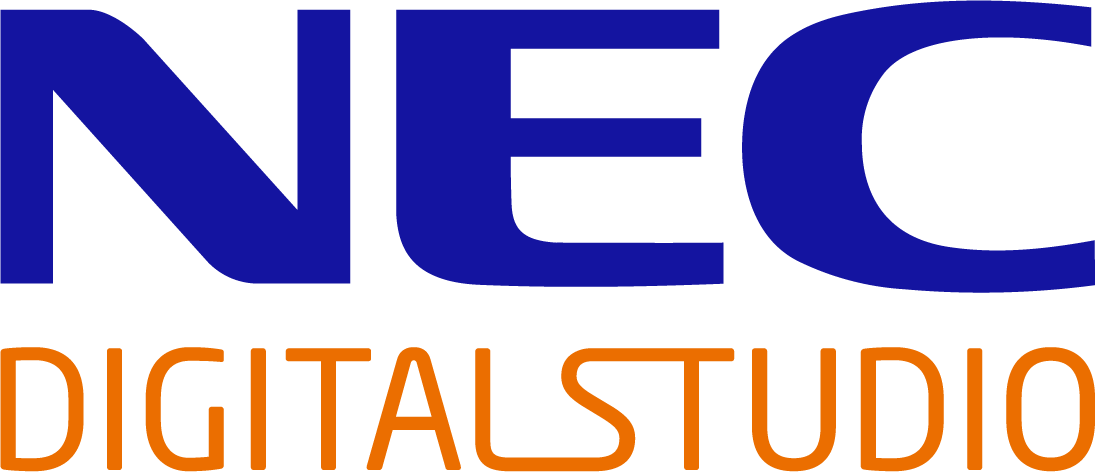 12 December 2025 · Articles
12 December 2025 · Articles
Differences designing in the public and private sectors
In this article, Martyn Dawson, Principal Interaction Designer at NEC Digital Studio, shares his insight on the differences and similarities when designing in both the public and private sector.

In this blog, Martyn Dawson, Principal Interaction Designer in NEC Digital Studio’s Interaction & Content Design Team, shares his insight on the differences and similarities when designing in both the public and private sector.
After 10 years in the private sector, I worked at the government’s Home Office throughout 2022. The switch highlighted differences and similarities between the two sectors. Here are my observations.
How it starts
Whether you’re developing a new service or reimagining an existing one, the user sits at the heart of decision-making. Government work starts in two ways: through new or updated policy or by a new user need. The brief always feels open, with room for exploration.
The private sector differs. A project could be instigated by a request from management or a desire to keep up with competitors. Or it could be that, as in the public sector, there’s a new user need. And the room for exploration is generally tighter.
Defining the role
Job titles are an interesting place to start. In government, I’m an ‘Interaction Designer’. In the private sector, my role is ‘User Experience Designer’.
Additionally, the scope of the role seems broader in the private sector.
When I worked in e-commerce and finance, I’d be involved with creating artefacts such as journey maps, personas, etc. as well as interaction design.
In government, the role is focused on interaction design (that is, designing user interfaces). Artefacts are still important, but they’re covered by other disciplines (for example, service design or user research). Being this focused allowed me more time and freedom to collaborate with other team members.
How information is shared
Being in a government user-centred design (UCD) team, I found myself part of a constant flow of information between designers and other disciplines.
I was immediately connected to government channels, departments and agencies. There was a supporting, nurturing community of design and practice. Work, challenges and opportunities could be shared and triaged with like-minded folk.
This open approach has obvious benefits. As someone new to the sector, it was a place to quickly overcome government onboarding hurdles and get to know people in similar roles.
By sharing challenges with a community, I received a host of responses from people with similar experiences who had solved similar problems. It was efficient, which is good for the taxpayer too!
In the private sector, businesses might want to hold back certain things to stay ahead of competition. Innovations and good insight are gold dust. Keeping this to yourself means you’re a step ahead of the competition.
The appetite for risk
I’m going to look at the methods used to learn and accept risk. How much risk is an organisation willing to take when a product/feature goes into the public domain. Any why that risk would be accepted.
In the private sector, designers generally accept more risk.
Through A/B testing, you experiment with variations to see what performs best. This means you’ll accept the risk of releasing something that may not work as well for users. Being able to release early and often allows you to reach more data-driven, informed conclusions – and to learn in a live environment.
In government, there’s more control. How you gauge the effectiveness of a design or feature is ringfenced. And it’s done in a smaller scale environment to reduce the amount of risk. At the same time as gaining insight, the government is protecting:
- the investment made by the taxpayers
- policy and security constraints (experimentation isn’t an option)
- itself from media scrutiny if the service malfunctions

Experiences for all?
In the public sector, the benchmark is the government’s service standard, created to ‘make sure everyone can use the service’. This includes those with access needs and people with legally protected characteristics.
Inclusivity is central to the design process; it’s defined in the service standard at every phase of the design framework. In fact, it’s the law: Public Sector Bodies Accessibility Regulation.
UCD teams carry out research with a diverse range of users, including those with access needs. And inclusivity is not only considered – it informs the design itself.
Additionally, the GOV.UK Design System guidance makes it hard to make a poor design decision. Each component and pattern has been subjected to the same rigorous standard of usability and accessibility testing.
While accessibility remains important to decision-making in the private sector, circumstances don’t always allow for the same care and attention to be paid to ‘designing for all’.
This could be the design of the brand, which can include immersive visual elements that aren’t good for a fully accessible experience. Or it could be that people with access needs aren’t considered when usability testing and research takes place.
Finally, some stakeholders just don’t have a full grasp of accessibility and what it could mean for the business. It isn’t a priority.
Final thoughts
The government’s approach to design is focused on providing the best service to the public.

Therein lies a key take-away: government products and services focus on getting it right for everyone who will use them. A lack of competition allows everyone to focus on user experience – exactly where it should be.
In the private sector, there’s a lot of looking over your shoulder at what the competition is doing and focus can stray away from the user and their needs. Another difference is the sharing element. In government, there’s an incredible grasp of the fact that design is a collaborative discipline.
Sharing design, co-design and working in the open have many benefits. There are often more ideas and these create efficiencies. Research and solutions can be shared to help other teams.
I respect the private sector for its ability to ‘learn in the open’ and accept risk. It brings quantitative data into the decision-making process. I think learning with users at scale is the best way to make design decisions.
The public sector allows for learning in the open, just on a smaller scale and in a more controlled way (through betas and pilots).
The decision to be more risk adverse in government is driven the taxpayers’ investment in this service. But I think there’s an opportunity to be open about learning and improving experiences beyond a live deployment.
So, what side would I choose if I had to? Tough one.
My experience in the private sector outweighs my time in government, yet I find myself steering towards the government.
I see merit in both sectors, but government seems to have a better grasp of how design can be more progressive; how it can be used as a mechanism for the greater benefit of the organisation and, importantly, the user.


